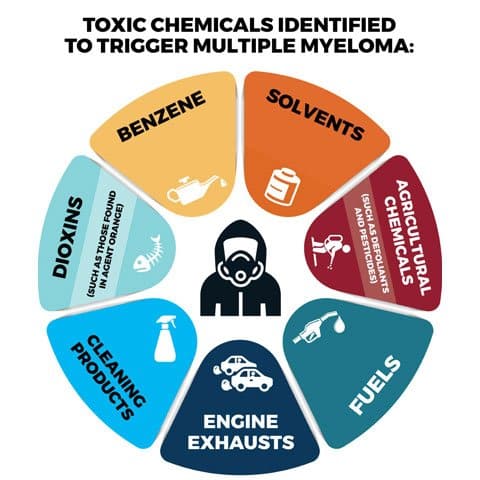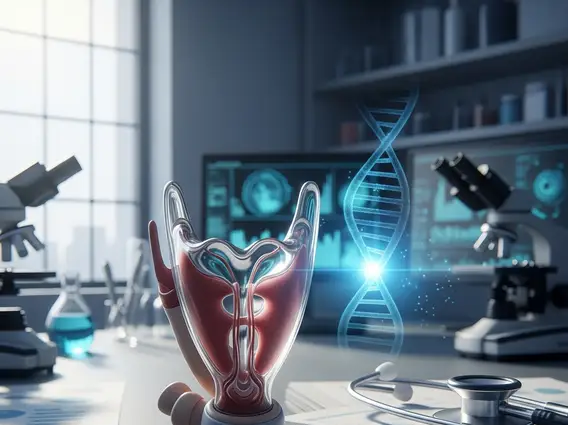Multiple Myeloma and Genetics
Multiple Myeloma (MM) is a type of blood cancer that spreads to plasma cells and attacks the bone marrow. It affects the bone marrow in the shoulders, ribs, pelvic bones, spine, and hips. Healthy plasma cells typically help the human body fight infection, while disease-affected plasma cells produce abnormal antibodies called M protein.
Protein M can damage bones and severely affect the body’s immune system, causing tumors or kidney damage. Multiple myeloma is the high level of M protein in the human body. It is the most common type of cancer that affects the skeleton.
So, how effective are genetic factors in the formation of multiple myeloma? You can read about the relationship between heredity and multiple myeloma here.
What Are The First Warning Signs of Multiple Myeloma?
Although multiple myeloma varies from person to person, it may not show any symptoms in the early stages of the disease.
The most common symptoms recorded are:
- Loss of appetite
- Bone pain, especially in the spine or chest
- Nausea
- Constipation
- weight loss
- mental confusion or confusion
- burnout
- Frequent infections
- extreme thirst
- Weakness or numbness in the legs
What Triggers Multiple Myeloma?
Although the exact cause of multiple myeloma is unknown, exposure to certain toxic chemicals, atomic radiation, anything that interferes with the immune system, or infection with cancer-causing viruses has been cited by scientists as causes or triggers of myeloma.
These chemicals and viruses include:
- Benzene
- Dioxins
- Agricultural chemicals (such as defoliants and pesticides)
- Solvents
- Fuels
- Engine exhausts
- Cleaning products
- HIV and AIDS
- Hepatitis
- Several herpes viruses
- MGUS

Who Is Most at Risk for Multiple Myeloma?
Multiple myeloma is a disease where the exact cause is unknown. MM can multiply unnoticed in the bone marrow and continue to divide indefinitely instead of eventually dying. However, it can increase multiple myeloma risk below:
- Age: As with most types of cancer, the risk of developing MM increases as people age. Most people diagnosed with MM are between the ages of 66 and 70.
- Gender: Men are 50 percent more likely to develop multiple myeloma than women.
- Race: Studies have shown that African Americans have a higher genetic risk of developing MM and a higher mortality rate.
- Obesity: Being obese or overweight may increase someone’s risk of developing MM.
- Some kinds of plasma disorders*: Some people with plasma disorders like MGUS (Monoclonal Gammopathy of Unknown Significance) or a solitary plasmacytoma can develop multiple myeloma.
*MGUS: A condition in which an abnormal protein known as a monoclonal protein or M protein is found in your blood. This abnormal protein forms in the blood-producing tissue in the bone marrow. It is usually seen in older men. If there is a high amount of this protein in the blood, it should be checked regularly in case of progression. If the disease is not progressing, MGUS does not require treatment, but if it does, it can sometimes develop into more severe conditions, including some types of blood cancer.
Solitary plasmacytoma (SM): A rare disease similar to multiple myeloma. People with solitary plasmacytomas do not have myeloma cells in the bone marrow or throughout the body. Instead, they have a tumor made up of plasma cells confined to a single body area. Usually, these tumors develop in the spine but can also occur in the pelvis, ribs, arms, face, skull, femur (thigh), and sternum (breastbone). Up to 70 percent of people with solitary plasmacytoma eventually develop multiple myeloma, most commonly occurring in middle-aged or elderly people.
Is Multiple Myeloma Genetic?
There is no evidence that multiple myeloma is an inherited disease. In some cases, MM may occur due to a genetic abnormality. Although the exact cause of the disease is not known, research has shown that several factors may contribute to the development of multiple myeloma. It is very rare for more than one family member to have multiple myeloma.
Can Multiple Myeloma Run in Families?
According to the International Myeloma Foundation, about 5-7 percent of people with myeloma have myeloma or a close relative with monoclonal gammopathy of undetermined significance (MGUS).
However, the American Cancer Society (ACS) states that most people who develop MM do not have any relatives with the condition.
Is Multiple Myeloma Terminal?
Myeloma treatment can be very effective in controlling the disease, relieving its symptoms and complications, and prolonging life. Multiple myeloma is classified as stages 1, 2, or 3. In cases of multiple myeloma, stage 3 is the terminal stage. This means that this type of rare cancer is at its most advanced stage. Doctors use the international staging system to determine the stage of cancer.
Sources:




















